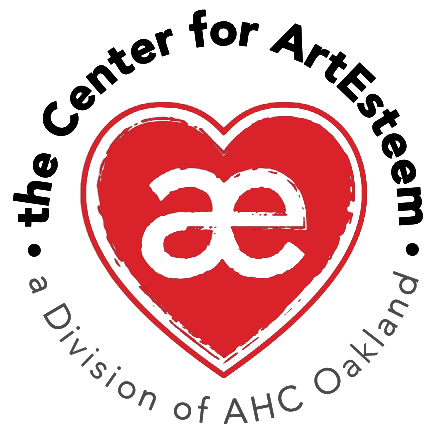
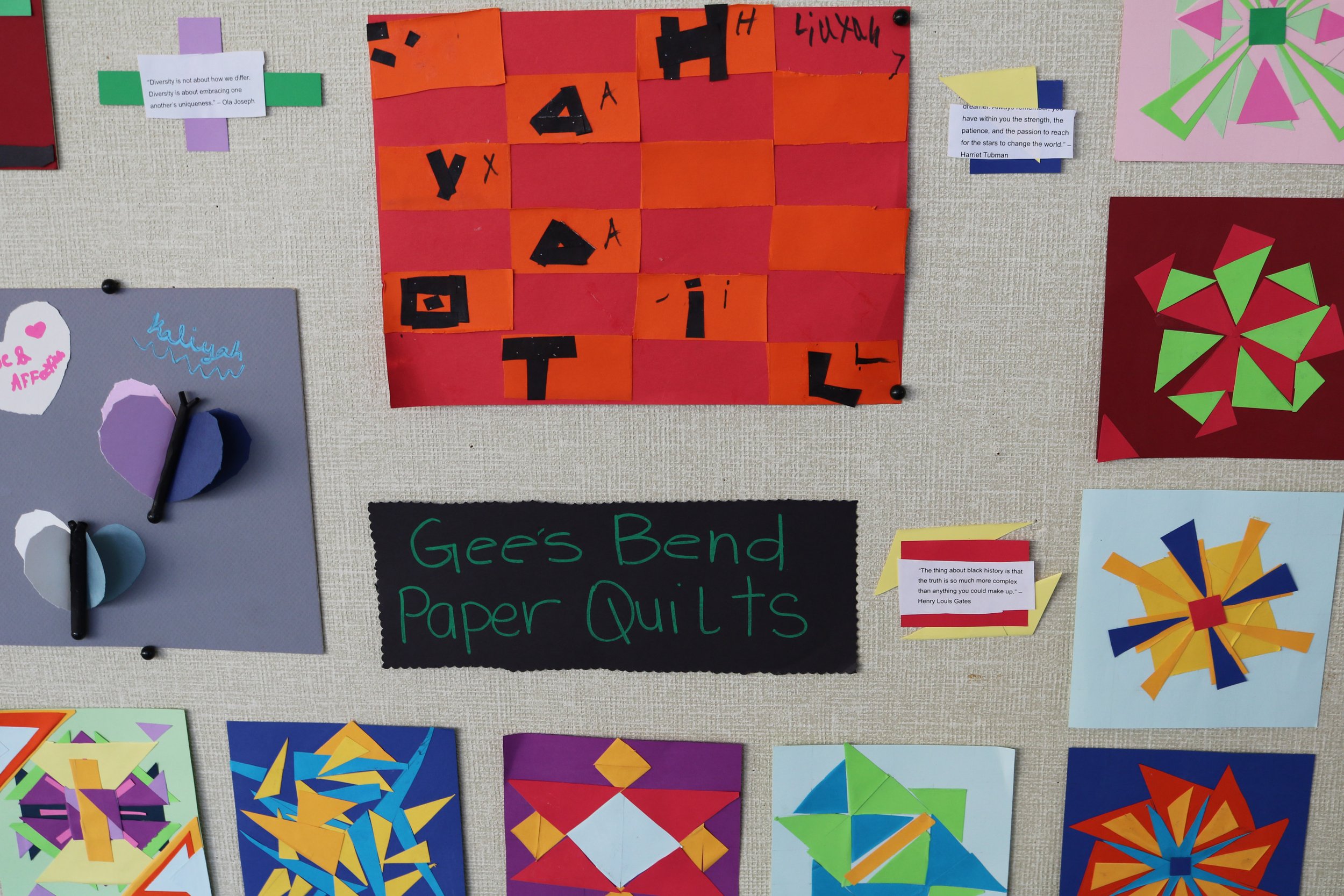
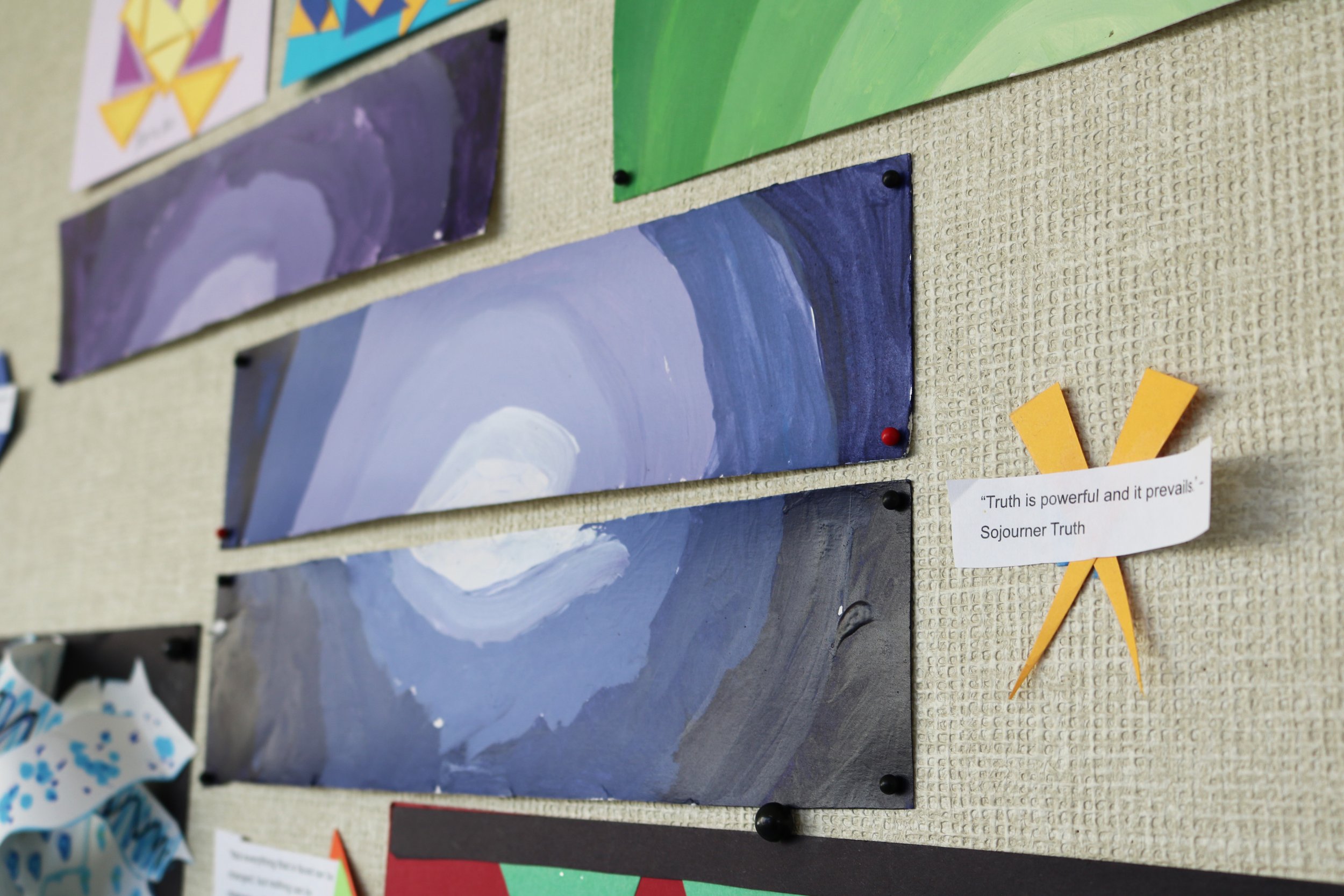
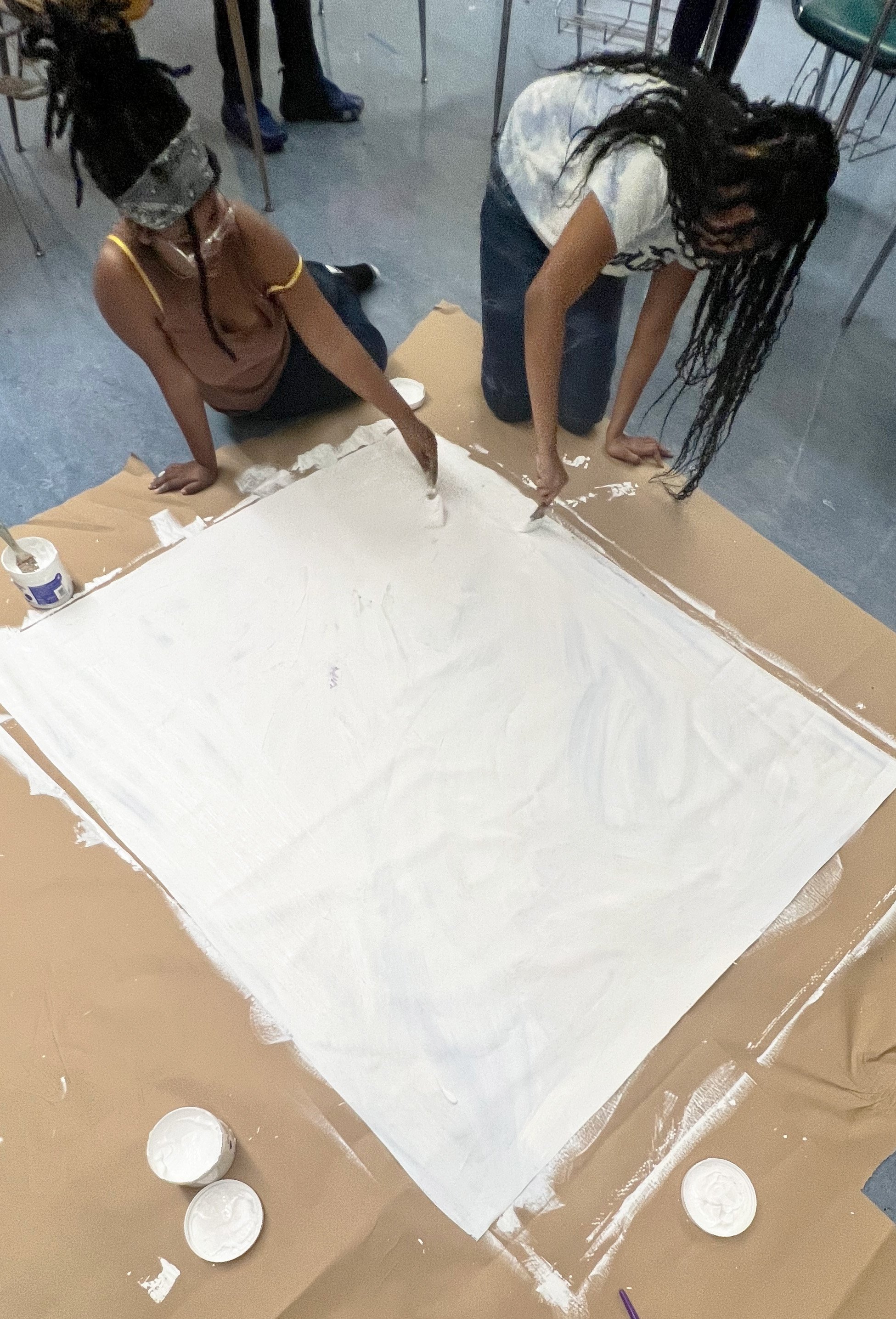
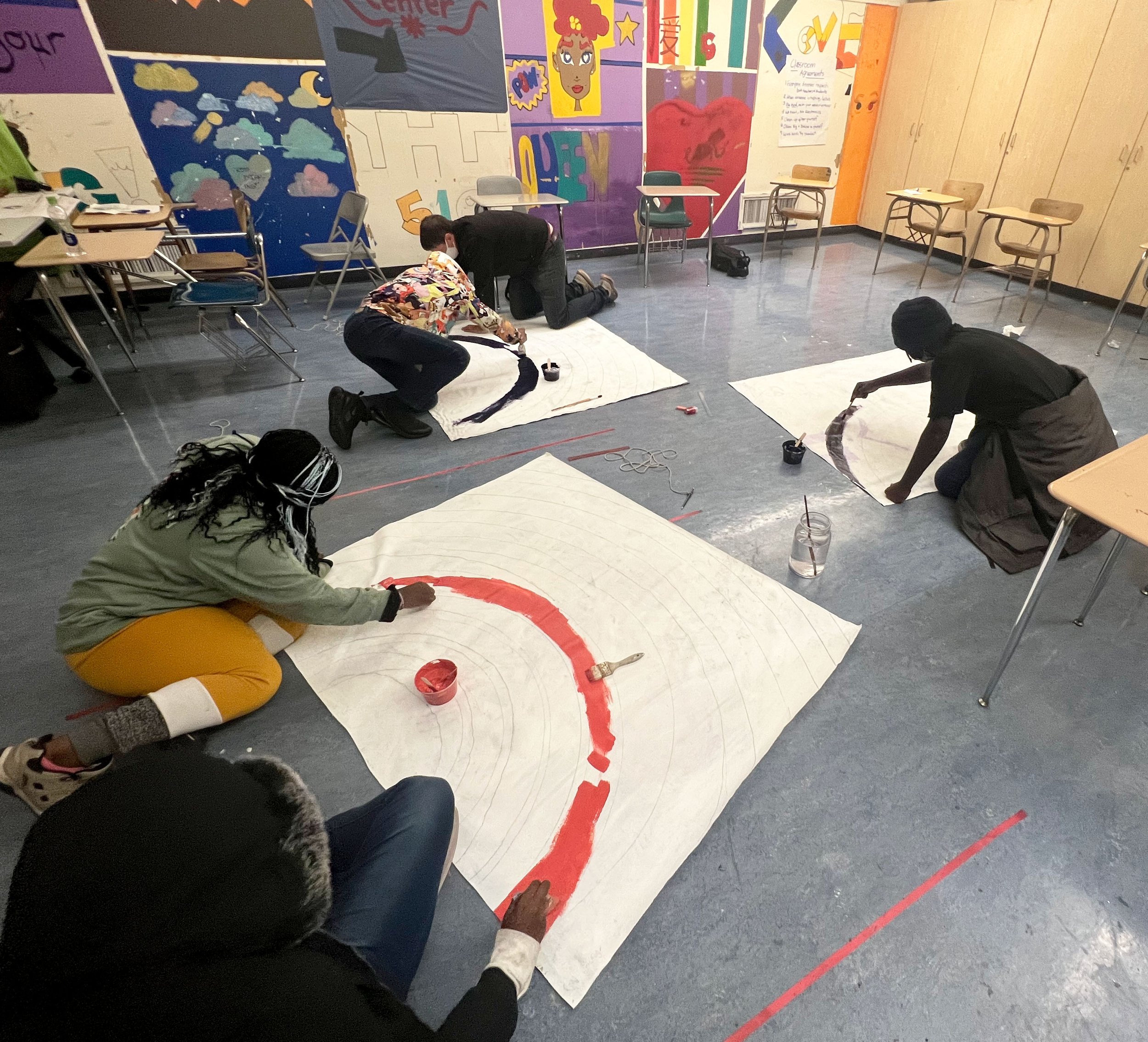
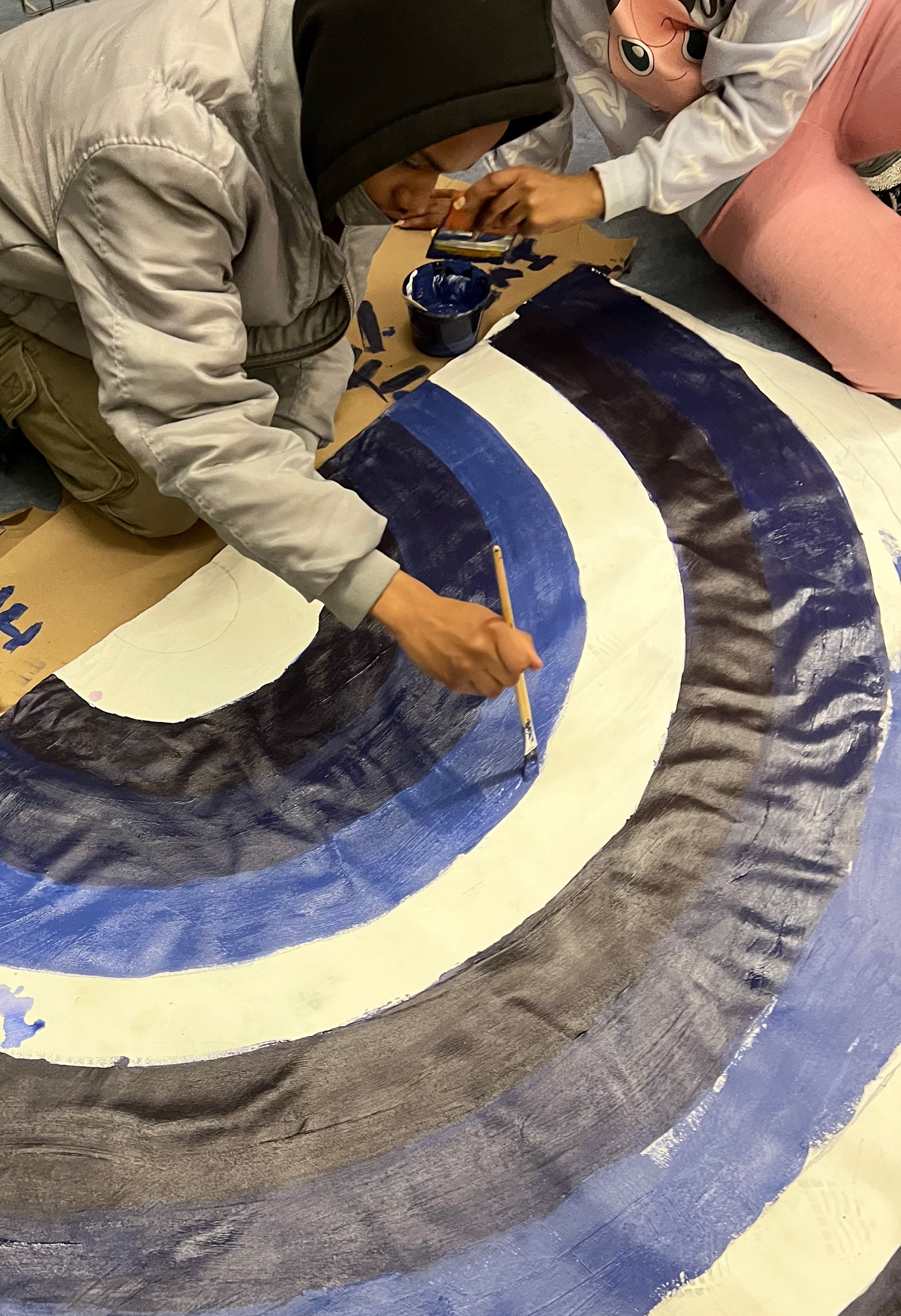

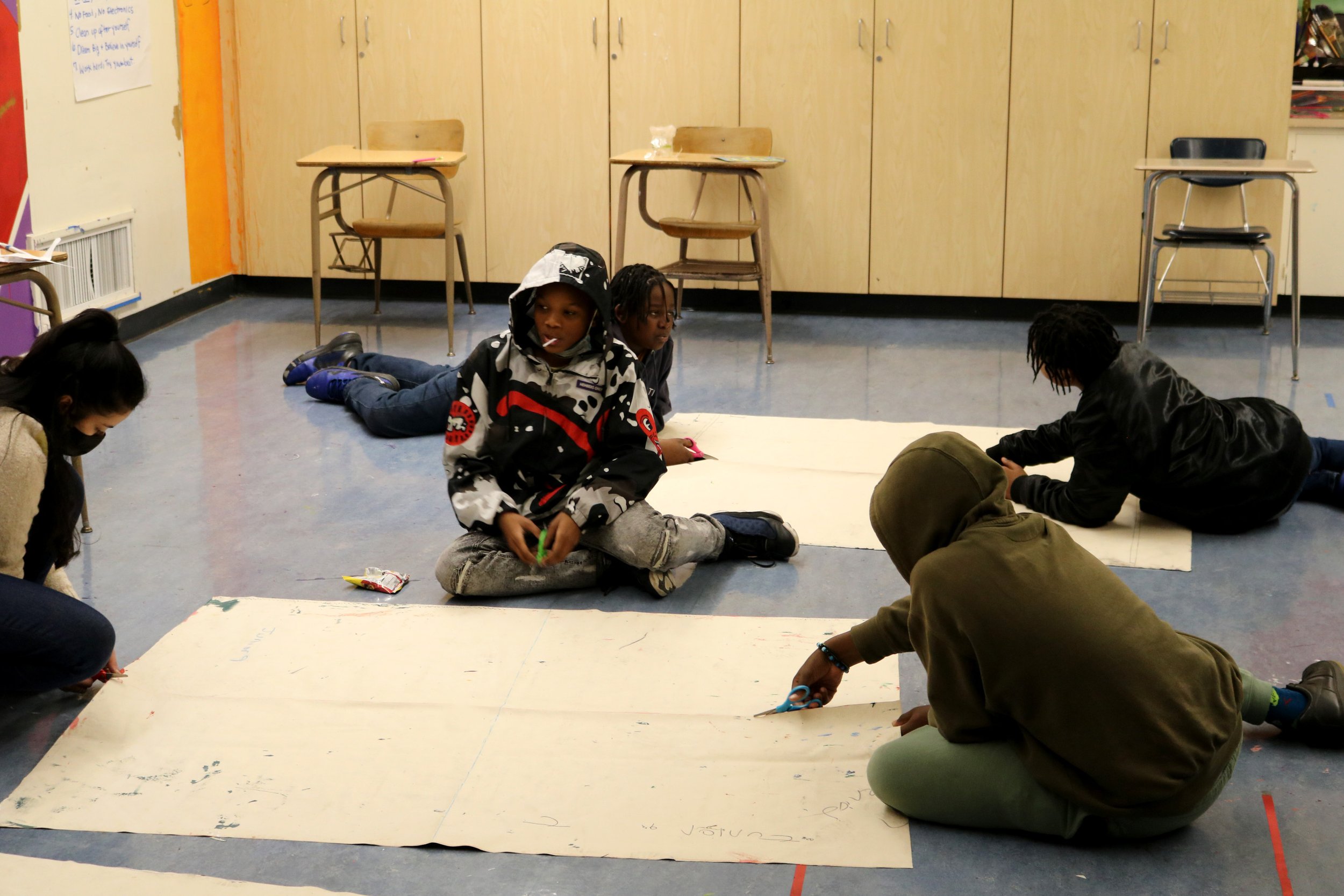
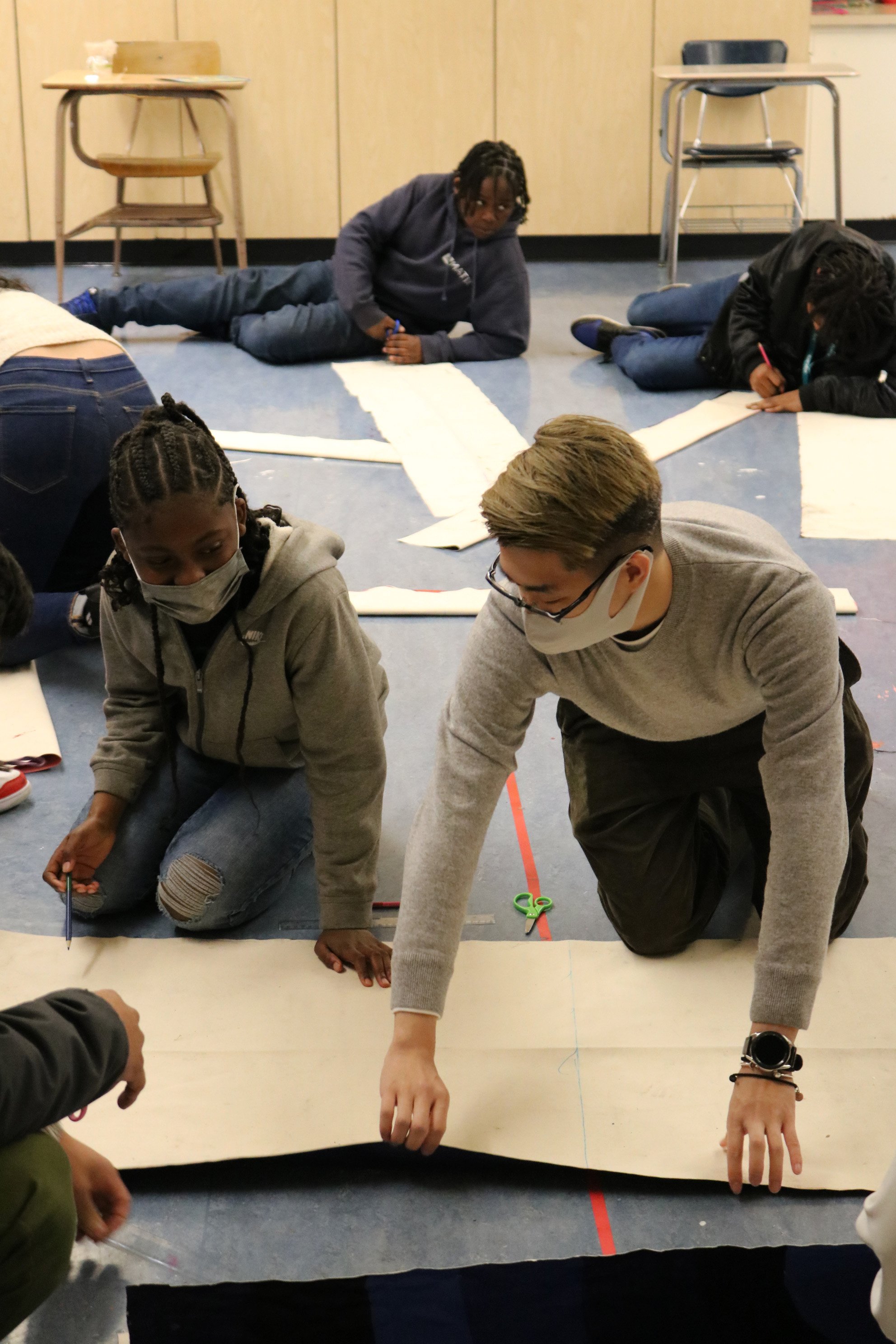
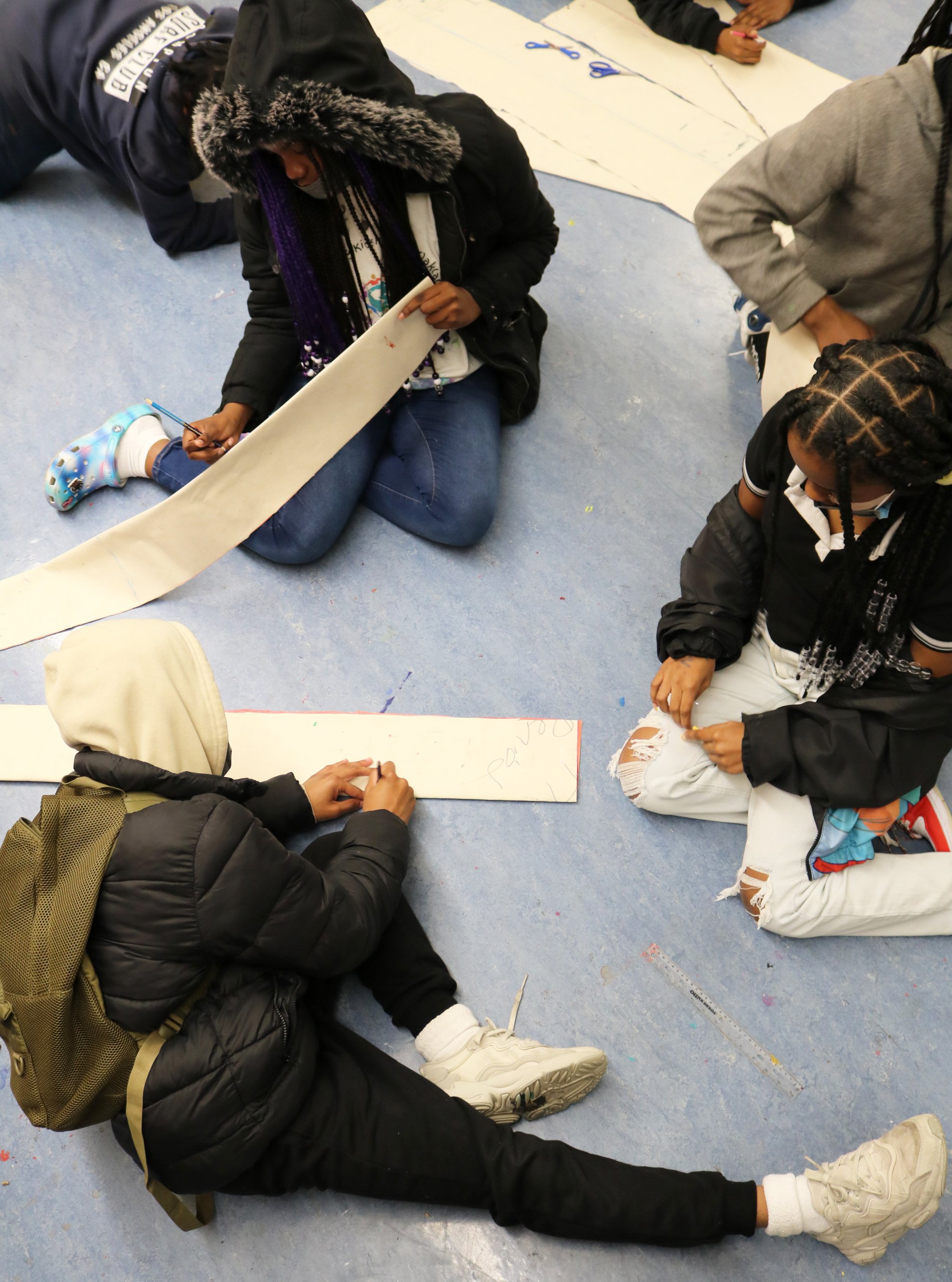
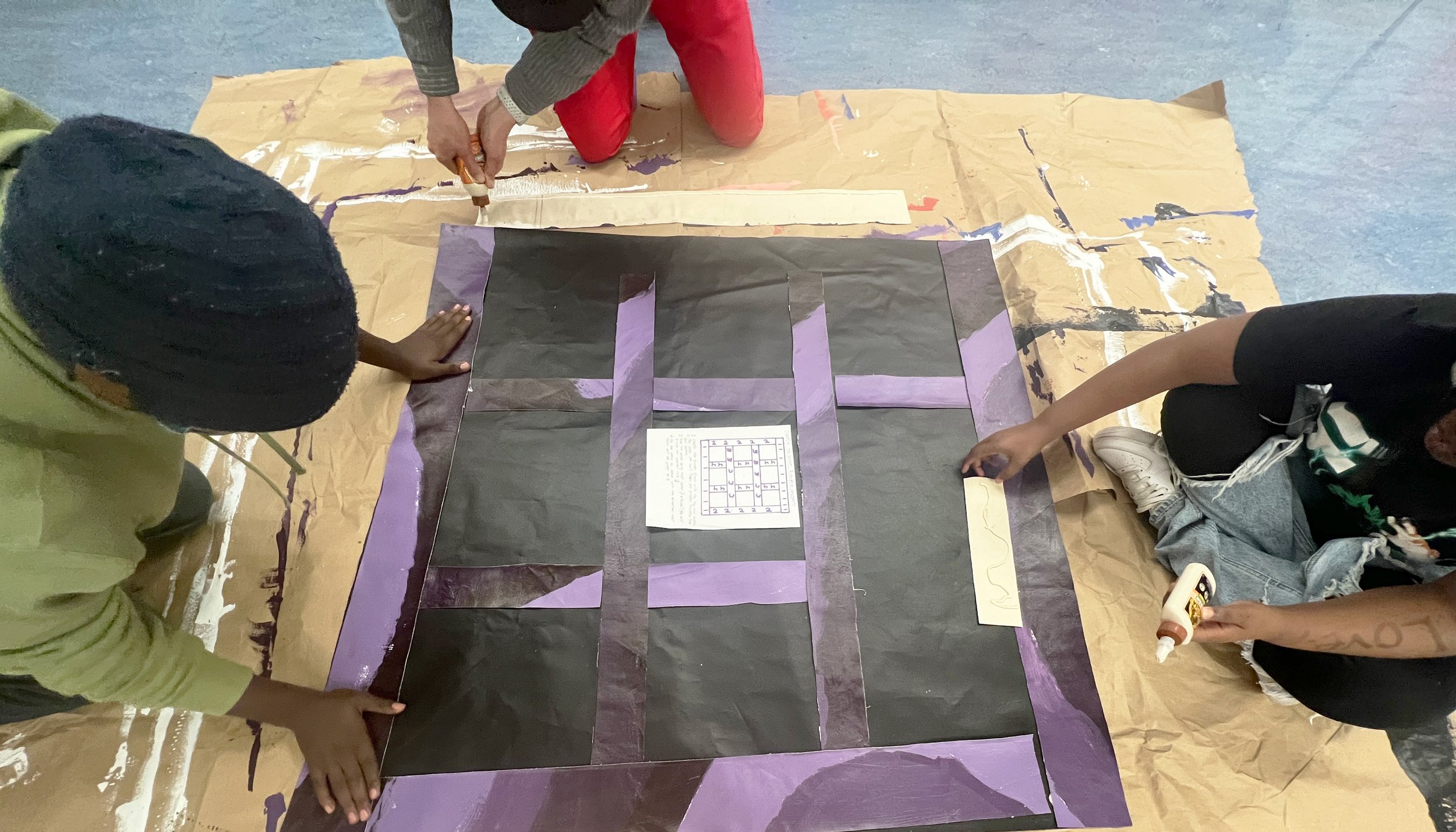
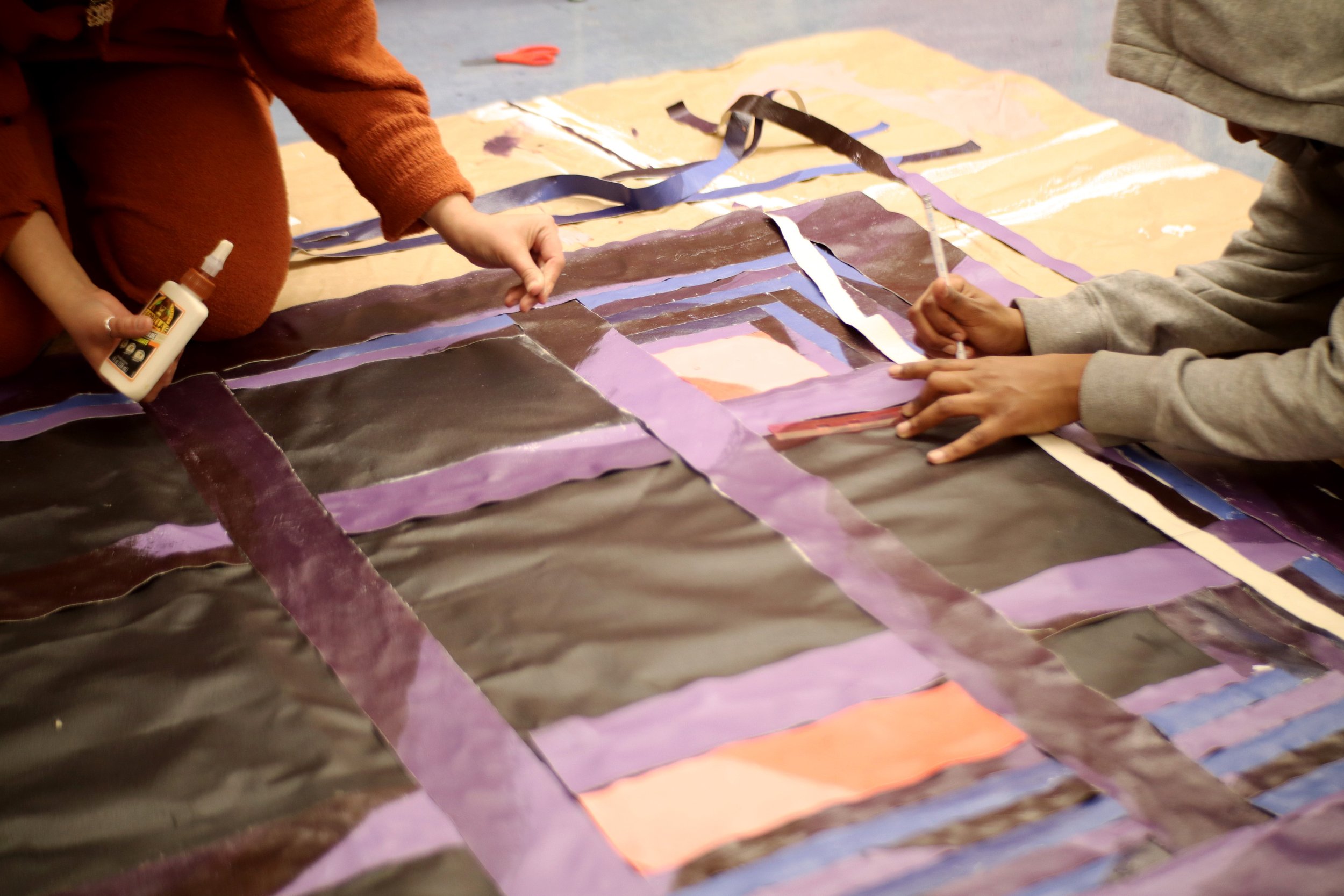
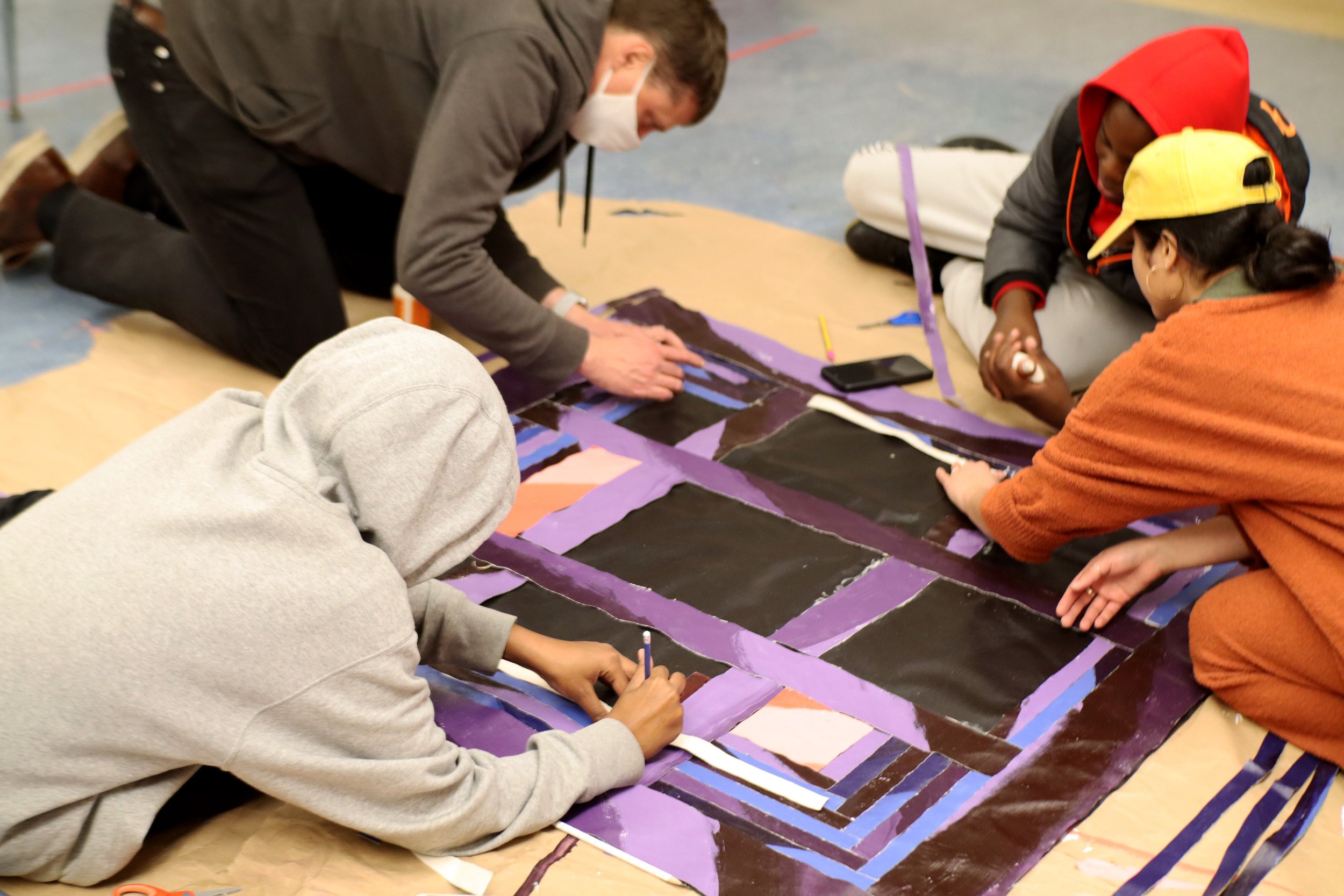
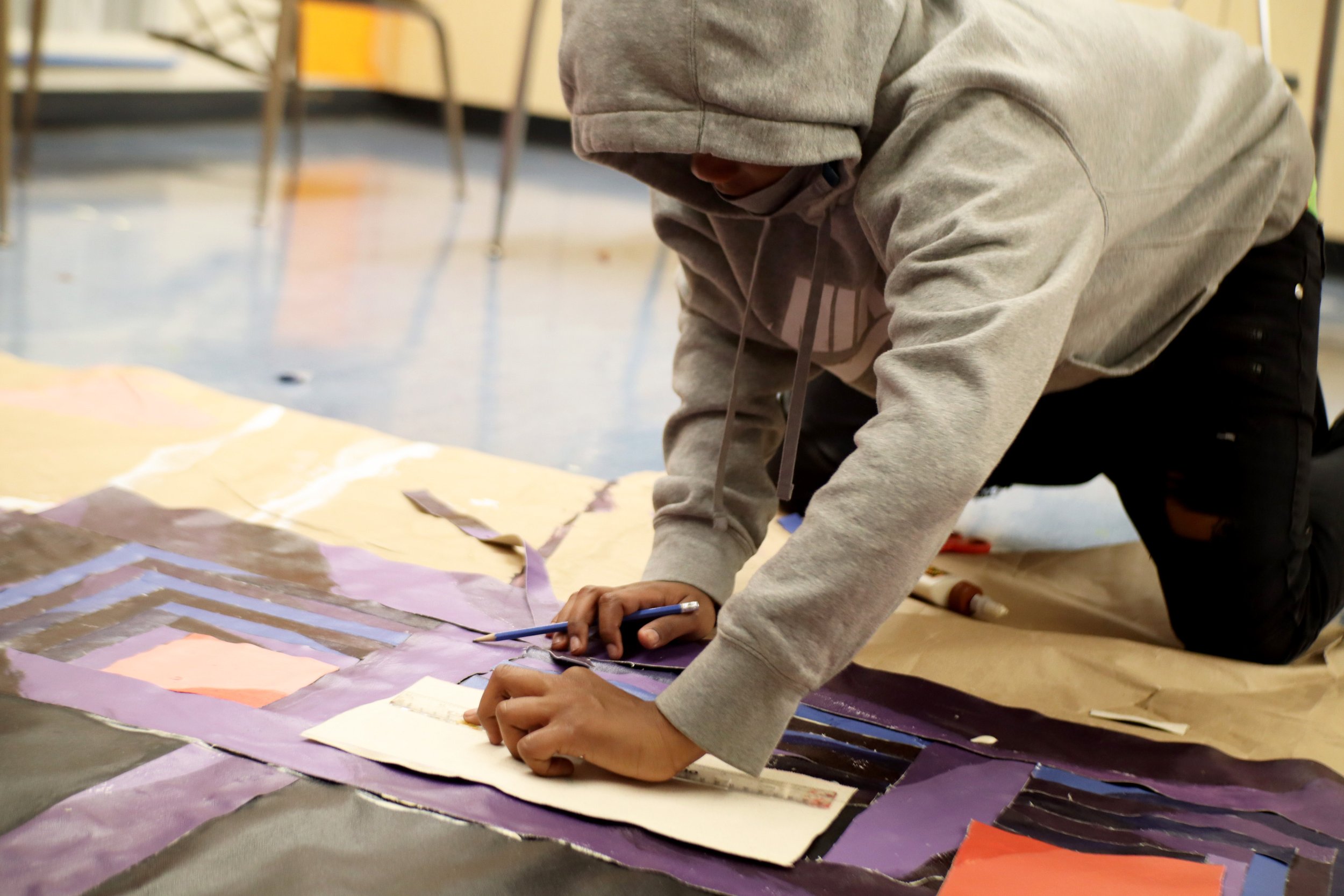
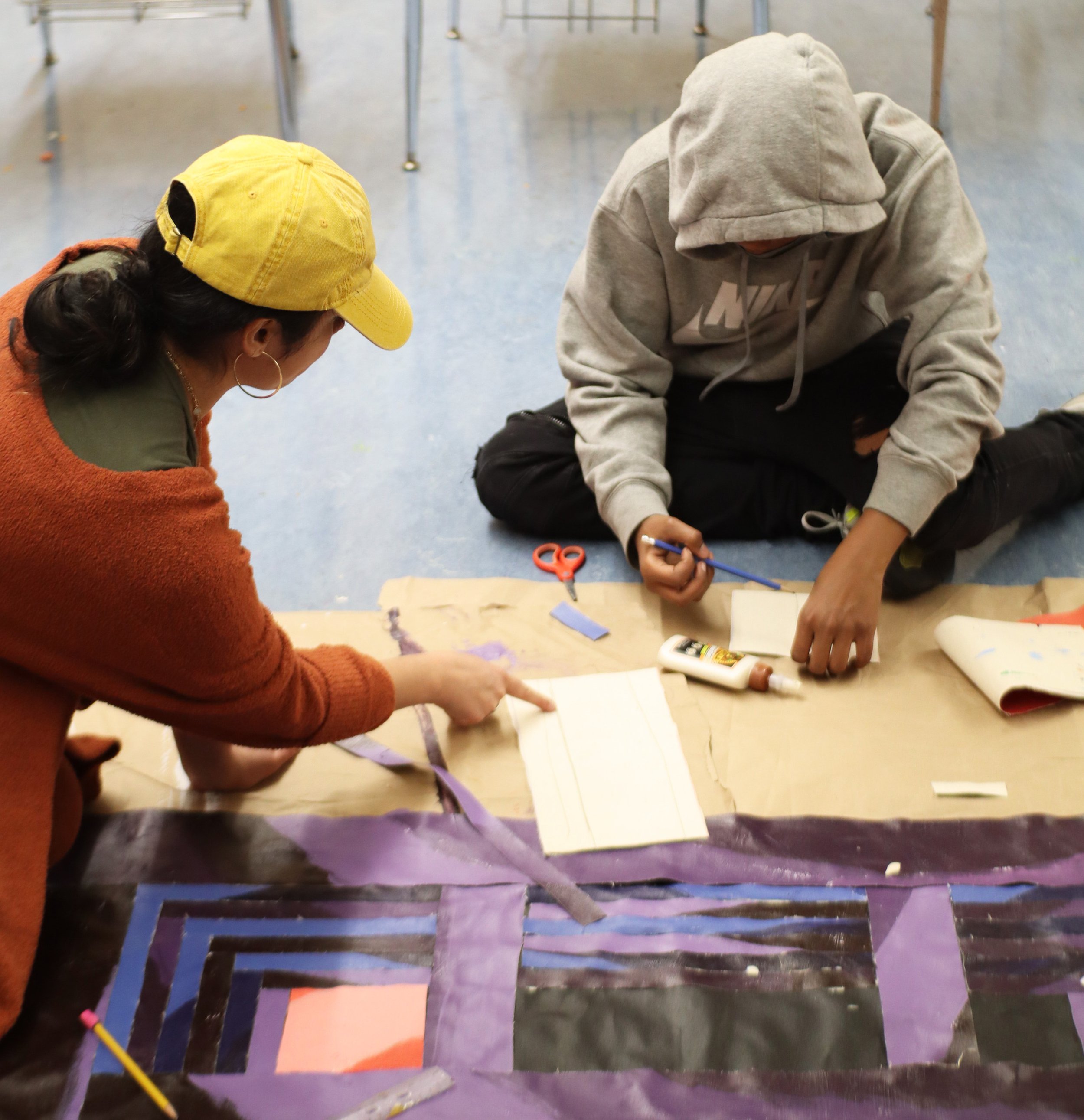
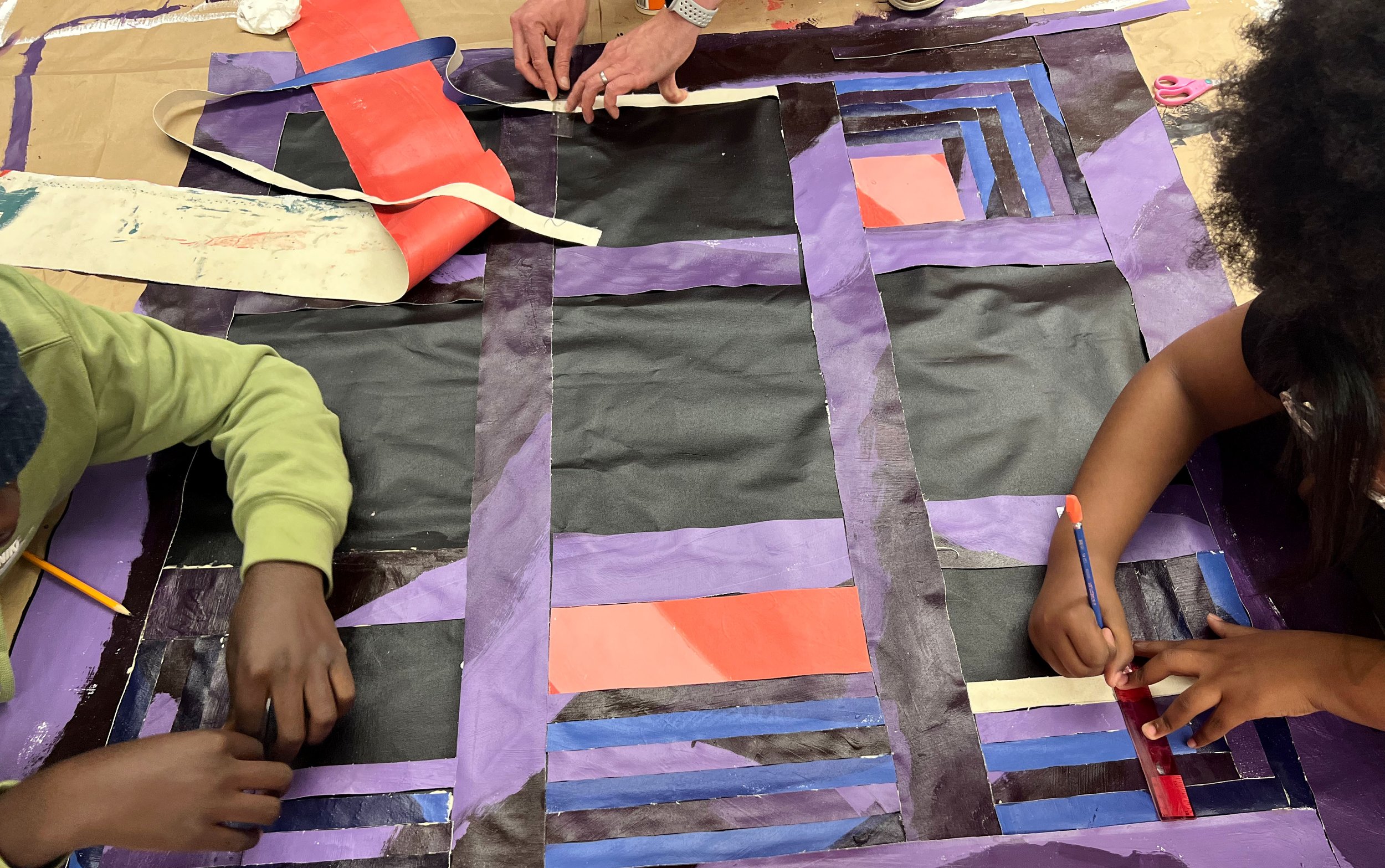
Teaching Artist Etty Alberto cultivates core tenets of the ArtEsteem program's learning goals in her students through her curriculum. Cultural awareness, anti-colonial thinking, sustainable art practice—engaging with these concepts empowers our youth to question, challenge, and deconstruct the systems they develop within.
Etty's after-school class at West Oakland Middle School recently completed a canvas quilting project that encompasses the critical comprehension and positive self-expression we advocate for. Inspired by the quilting practice passed down by generations in Gee's Bend, Alabama, the canvas quilt was made by repurposing unfinished cotton canvases from past ArtEsteem students. Through a process of learning, designing, gessoing, painting, cutting, and weaving, the once-abandoned canvases now yield new life and meaning.
In her art practice, Etty is "highly influenced by patterns, including patterns that have cultural ties to [her] and [her] personal experiences. [She is] always inspired by communities with intricate and decorative craftsmanship in their handicrafts and artisanal objects. Patterns are always the common denominator [humanity shares] universally, and [she] was excited to share this with [her] class." During her research for the lessons, Etty learned about quilts from all parts of the world. She noted that reuse is a global practice for quilting, and tied this concept of sustainability and perseverance into the project's knowledge points around overcoming adversity within Black history.
In Gee's Bend, repair and repurposing have been essential for survival. The community has continuously struggled for resources and economic development, similar in experience to many descendants of enslaved peoples but distinctive in their geographic isolation. Located at a deep bend on the Alabama River, the waters nearly encircle the town. Their population, a majority of whom descend from enslaved people on the Pettway plantation, has historically fluctuated between a mite less than 100 and scarcely over 500 people.
These circumstances gave great importance to each item of clothing and the skills needed to repair and repurpose them. Quilting emerged from enslaved families' need for warmth and bedding in makeshift cottages without heating, and has continued as a practical and cultural tradition.
When first learning about the history of Gee's Bend, Azia, a 7th grader, noted with sadness that "when [Gee's Bend residents] were growing up, [they] didn't have a lot to do and used to sneak to go to school." Another classmate, a 6th grader named Robert, connected experiences of youth in Gee's Bend with Oakland's youth, expressing that ArtEsteem "is a very good class" and "[he] thinks everyone should go to it," citing his friends' improvement in artistic skills and focus in the classroom. 6th grader Clarence expressed his appreciation for the quilters' skills, wondering: "How did they make [the quilts] since they didn't have resources?" Pondering further, he made a parallel with Oakland's artistic culture, mentioning that "Blank walls become nice, beautiful murals."
As with Oakland's murals, Gee's Bend quilts enrich the culture of the community and serve as vessels of expression, remembering, preservation, and pride. While we should not forget the racist, classist, capitalist systems that breed the art of resilience we see, we can take a moment to revel in the realities and beauty within our communities' colorful expressions.
